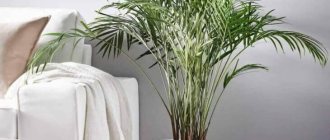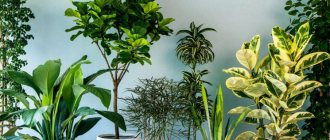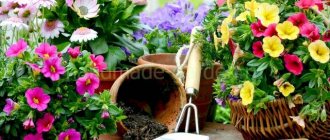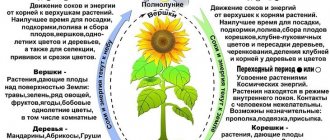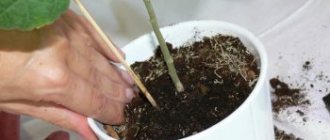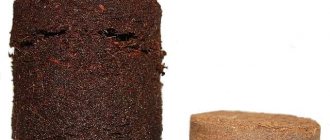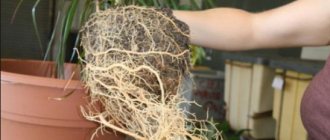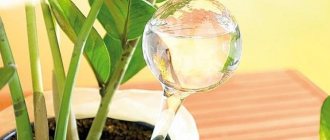Updated: 04/22/2021 16:44:21
Expert: Nikolay Alexandrovich
*Review of the best according to the editors of expertology.ru. About the selection criteria. This material is subjective in nature, does not constitute advertising and does not serve as a purchase guide. Before purchasing, consultation with a specialist is required.
Each type of plant requires soil that would help it develop correctly and fully. For this purpose, a special soil is prepared with a balanced composition, acidity, and the required amount of micronutrients. It should not contain foreign impurities. A high-quality mixture allows air to pass through well, it is soft, crumbly, with optimal humidity. For the convenience of gardeners, it is packaged in bags of different sizes.
Soils are universal, that is, suitable for many types of plants. But they do not always take into account the peculiarities of whimsical varieties. For domestic flowers, conifers, and vegetable crops, special compositions are created that are as close as possible to the natural growing environment. When mixing, different types of soil are taken. The most fertile is black soil. It contains up to 9% humus, perfectly absorbs and retains moisture. Black soil is often combined with a peat base and sand. This composition is relevant for vegetable gardens and garden plots.
Some experienced summer residents prefer to make their own soil, improving it for a specific crop. But still, the majority buy ready-made soil, hoping for the professionalism of the producers. Our review presents 12 soils for plants, which received high ratings from consumers in all respects. Experts assessed their quality and highlighted their advantages and, if any, disadvantages.
Rating of the best soils for plants
| Nomination | place | Name of product | price for 10 liters |
| The best universal soils for plants | 1 | COMPO SANA universal soil soil | 210 ₽ |
| 2 | Terra Vita soil Living earth universal | 80 ₽ | |
| 3 | Soil Good helper universal | 50 ₽ | |
| The best soils for indoor plants | 1 | FASCO flower soil | 60 ₽ |
| 2 | Soil PETER PEAT Hobby line for indoor plants | 90 ₽ | |
| 3 | Veltorf universal soil for indoor flowers | 80 ₽ | |
| The best soils for vegetable crops | 1 | BIUD vegetable soil | 90 ₽ |
| 2 | Fasko Krepysh soil for seedlings | 60 ₽ | |
| 3 | Morris Green soil for growing vegetables | 90 ₽ | |
| The best soils for aquarium plants | 1 | Nutrient soil for aquarium Dennerle Deponitmix Professional 9 in 1 | 4 620 ₽ |
| 2 | Tetra ActiveSubstrate | 1 220 ₽ | |
| 3 | Nutrient soil JBL Manado improves water quality and stimulates plant growth | 1 250 ₽ |
Components
The reaction of the soil depends on what components are included in the earth mixture. In nature, the composition of the soil depends on the environment: the vegetation around, the presence of ground and surface waters and their composition, soil layers and much more. And for indoor flowers, we can select the components ourselves and obtain them either in nature or in a store (some things can even be bought at a pharmacy).
- Phalaenopsis - how to care at home
So, the main components of the earth mixture are: turf, leaf, manure-humus and peat soil. Other important components include: river sand, tree bark (mainly conifers), moss (sphagnum).
The best soils for indoor plants
FASCO flower soil
Rating: 4.9
First place was awarded to soil from a well-known brand, which is suitable for all types of house plants. It contains a balanced mineral complex that saturates it with useful substances, without overloading it with fertilizers. The environmentally friendly composition includes selected components and does not contain debris, impurities, or harmful additives.
FASKO products are recommended by professional flower growers. It has received awards for quality and efficiency more than once. The company continues to improve its formulations, making it possible to enjoy beautiful ornamental plants without much effort.
The soil provides good aeration. It is loose and does not crack when dried. Optimal humidity and acidity guarantee good survival rate, intensive growth, and accelerated flowering. Consumers note that the soil has a crumbly structure, contains all the necessary microelements for healthy growth and improvement of the decorative properties of plants, and strengthens fragile, almost non-viable roots.
Advantages
- versatility of use;
- hygroscopicity;
- without pathogenic microbes;
- soft consistency.
Flaws
- not identified.
Soil PETER PEAT Hobby line for indoor plants
Rating: 4.8
The second line is occupied by soil, which serves as an alternative to fertile soil and is in no way inferior to it in nutritional composition. It is created from complex mineral fertilizer, high-moor and low-lying peat, agroperlite, limestone flour and river sand. The mass fraction of moisture does not exceed 65%. The soil increases the survival rate of only planted flowers, and also improves the decorative qualities of already growing ones.
The structured composition has optimal moisture permeability. It is clean, without debris, lumps, or weed seed residues. PETER PEAT product provides long-lasting nutrition and improves the effect of feeding. The manufacturer conducted tests, which confirmed positive results from its use.
Many consumers note that various indoor plants feel comfortable in the soil. After transplantation, strengthening and more intensive growth are noticeable. Mold and rot do not appear. There is no smell. Buyers give high scores, experts also confirm the quality.
Advantages
- balanced composition;
- free from bacteria and weeds;
- wide range of applications;
- Suitable for demanding flowers.
Flaws
- not identified.
What kind of soil is needed for planting indoor flowers?
For indoor flowers, you need special soil so that it does not dry out quickly or, conversely, turn into a clay lump. This is what we will talk about today in continuation of our topic about growing plants at home.
Before you go shopping at the garden center, it's worth brushing up on your knowledge about house flowers:
- How to correctly assess the conditions in the room where you plan to place flower pots;
- How to choose healthy plants;
- Which home flowers are ideal for your conditions.
- Why you can’t replant a newly acquired plant.
- Choosing pots for plants.
But let’s return to “our sheep” - what soil is best for indoor plants. First, I’ll tell you what kind of soil is completely unsuitable for these purposes: soil taken from a flower bed or garden. Loose and fertile, in a pot it tends to become stone and is completely unsuitable for the home.
To plant indoor plants you need a special composition. You can prepare them yourself or buy them ready-made in the store.
It is worth talking in more detail about ready-made planting mixtures (substrates) usually used for growing home flowers.
Why ready-made soil mixtures are not suitable for indoor plants
Ready-made substrates that are sold under the proud name “Soil mixture” actually have nothing in common with soil. They consist mainly of red (high) or black (low) peat with the addition of mineral fertilizers and other components (coconut fiber, vermiculite, charcoal, etc.), depending on what plants they are intended for.
This is what the manufacturer usually reports in small print somewhere at the bottom of the package, calling this revelation “Composition of the mixture.”
Have you ever read it?
Most failures in growing home flowers are associated with the use of ready-made (read: peat) substrates.
There is no doubt that it is very convenient to use ready-made planting soils. There is no need to look for different types of soil, no need to prepare them for future use and store them in the house, taking up the space necessary for life. Peat-based compositions are light and absorb water well. On sale you can find such a mixture for all types of plants. And this would be a solution to the problem for most amateurs, if not for one thing...
But the peat composition is unstable, it dries out quickly. All assorted peats must be kept constantly moist - when they dry out, they have difficulty absorbing moisture. But most of your green pets require the soil to dry out between waterings. And some of them cannot tolerate excess moisture at all.
That is why it is easy to flood a flower in such a soil substrate.
In peat compositions, fertilizer reaches the root system much faster than in earthen ones, but when watering it is easily washed out. Therefore, within a few weeks after transplantation you will have to feed the plant. Do you know that the dose of fertilizer when feeding is not always easy to determine? At the same time, it is easy to “overfeed” your pet or, conversely, make him “starve”!
By using ready-made peat-based substrates, you create additional difficulties for yourself.
The exception is compositions with the addition of vermicompost. Humus (chernozem) is soil rich in organic matter. Such compositions are less common and are usually more expensive compared to peat-based substrates.
We conclude:
The soil for indoor flowers must be prepared with your own hands.
Don't be alarmed, it's not difficult at all.
A little information about the different types of soil will help you figure it out.
Characteristics of garden lands
It is quite porous and elastic. It can be found in the meadow closest to your home. It is enough to take good turf (a layer of soil with grass roots, 15-20 cm deep), chop it and sift it with a sieve. Plant residues can be discarded, and what remains will be turf soil.
Deciduous (leafy)
This is light, loose and quite nutritious soil, which is formed from the annual rotting of leaves and branches in a grove, forest or planting. The easiest way to find leaf soil is in places with densely growing deciduous trees, in which the foliage is not removed, but remains on the surface and rots. Remove the top layer of freshly fallen leaves and collect the soil that is under it, but no deeper than 10-15 cm, possibly with the remnants of well-rotted last year's foliage.
Humus It is obtained from rotted manure. It is light, fluffy and very rich in nutrients. In the village it is quite easy to find humus soil. In the city you can get it in greenhouses. In its pure form, sand is used for cuttings.
It is added to all mixtures in an amount of 10-20 percent.
The best is coarse-grained river or lake sand.
Preparing soil for indoor flowers at home
Recipe one:
Take 3 parts (by volume) of turf soil, one part each of sand and leaf soil (humus or red peat). Pour into a bowl and stir. This mixture is called heavy. This soil composition is suitable for indoor plants with thick, coarse roots: dracaena, monstera, large trees.
Recipe two:
Take sand and add 2 times the volume of turf soil and 2 times the volume of leaf or humus. Mix thoroughly. This mixture is called medium. It is suitable for plants with roots of medium thickness: aspidistra, large spathiphyllums, anthuriums, small shrubs.
Recipe three:
Take one part each of sand and turf, add 3 parts of leaf or humus soil. Stir. This mixture is called light. It is suitable for species with thin, delicate roots and all herbaceous species.
Recipe four - universal soil for indoor plants:
It will come in handy if you are unable to find turf and humus soil.
Take one part each of peat (it is better to use high red peat) and sand, add 3 parts of deciduous soil.
In the literature for gardeners there are complex recipes with the addition of various exotic components. For example: coconut fiber, sphagnum moss, brick or marble chips, perlite, etc. It is believed that some types of flowers grow better with such additives.
But the truth is that plants are very flexible and easily adapt to other types of soil mixtures as long as they contain enough nutrients. Therefore, do not complicate your life by searching for rare soil additives. The above recipes will suit almost all of your green pets.
So, the sixth secret in growing indoor plants
To avoid difficulties in caring for house plants, the soil for indoor flowers should be prepared with your own hands according to one of the above recipes.
The best soils for vegetable crops
BIUD vegetable soil
Rating: 4.9
Gold medalist - soil that is used on open soils, in greenhouses, greenhouses for growing nightshade, pumpkin, cruciferous, and all types of greens. The multicomponent mixture is ready for use. It is used during planting of seedlings, to strengthen young plants, and increase crop yields. The consistency is loose, soft, optimally structured. The neutral environment ensures high survival rate in the northern regions.
The soil is enriched with fertilizer based on horse manure, which has powerful fungicidal properties. It consists of a mixture of lowland, transitional and high-moor peat, drainage and agroperlite sand, dolomite chips, and phlogopite. This combination provides plants with phosphorus, potassium, magnesium and other useful substances.
Nitrogen of organic origin stimulates the growth and development of the green part of crops. When subsequently applying fertilizers, the soil absorbs them well, holds them, prevents rapid washing out and guarantees a long-lasting effect.
Advantages
- based on bioorganic fertilizers;
- protection of roots from fungus and rot;
- maintaining optimal humidity;
- testing in the Central Botanical Garden.
Flaws
- not identified.
The best soils for aquarium plants
Nutrient soil for aquarium Dennerle Deponitmix Professional 9 in 1
Rating: 4.9
The first place nutrient soil was created based on years of research and taking into account the needs of popular aquatic plants. It does not harm the inhabitants of the aquarium. The substrate has a composition rich in humus and minerals. All raw materials are carefully selected and tested. The iron concentrate stimulates the rapid formation of green leaves. Peat maintains optimal pH balance and regulates acidity.
Porous granules have increased water conductivity. They are converted into a biofilter, keeping them clean for as long as possible. Plants receive the required amount of microelements, while being securely attached to the bottom. The most demanding species thrive with the Dennerle product.
There are no phosphates or nitrates in the composition, which contribute to uncontrolled algae growth. As a result, the aquarium creates exactly the environment that the consumer intended. Neat granules look attractive and improve appearance.
Advantages
- stopping algae growth;
- long lasting nutritional effect;
- harmless to inhabitants;
- active water purification.
Flaws
- not identified.
Tetra ActiveSubstrate
Rating: 4.8
In second place is soil from a well-known brand that specializes in floristry and equipment for aquariums. Most of its products have patents and are produced using unique advanced technologies. The natural substrate is in the form of smooth granules, which prevents injury to bottom-dwelling fish. It activates rapid plant growth. Water permeability is 50% higher than ordinary gravel.
The soil reduces the strain on the filter by reducing organic contamination, thereby extending the life of the device. The water does not become cloudy, the roots do not rot. The optimal structure ensures the correct microclimate for all types of aquarium plants. ActiveSubstrate creates a rigid cushion so that even fine roots are anchored in the pores of the granules.
According to reviews, the soil showed excellent results in practice. It has an attractive appearance, which is very important from an aesthetic point of view, provides nutrients, and guarantees healthy growth. With the mixture, the normal functioning of the aquarium is maintained and the burden on humans is reduced.
Advantages
- natural composition;
- fixation of fragile roots;
- safety for fauna;
- neutral in water.
Flaws
- not identified.
Nutrient soil JBL Manado improves water quality and stimulates plant growth
Rating: 4.7
The third was a product that is designed to create a favorable environment and intensive sustainable growth of plants. It is produced by a renowned company that develops innovative products ahead of many competitors. Her know-how is primer of various colors, which makes it possible to create the desired design. The natural porous structure allows for the growth of beneficial bacteria.
The soil helps maintain the crystal purity and transparency of the water, increasing the level of filtration. It serves as a buffer. It releases the required amount of nutrients, and when they are in excess, absorbs them back. This helps prevent intensive growth of aquatic weeds. The round shape does not harm the inhabitants. Thin roots are securely fixed, which prevents fish from eating them.
According to reviews, the mixture from JBL is an excellent solution for aquariums from both a practical and aesthetic point of view. She looks very attractive. Thanks to the balanced, non-toxic composition, plants quickly take root and the water does not become cloudy.
Advantages
- beautiful shade;
- bacterial dispersal;
- algae growth control;
- intensive cleaning.
Flaws
- not identified.

